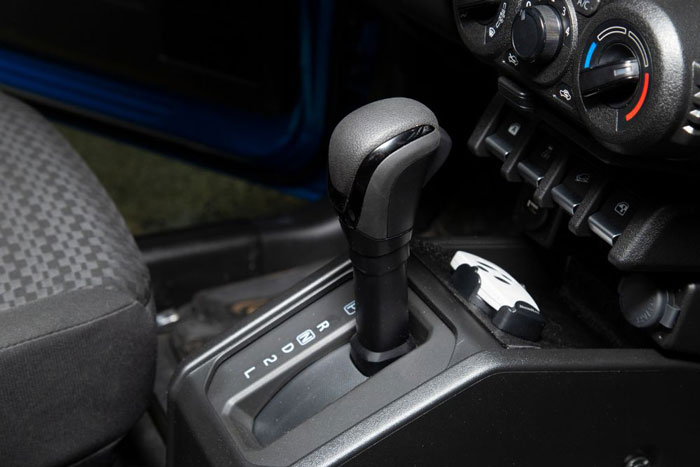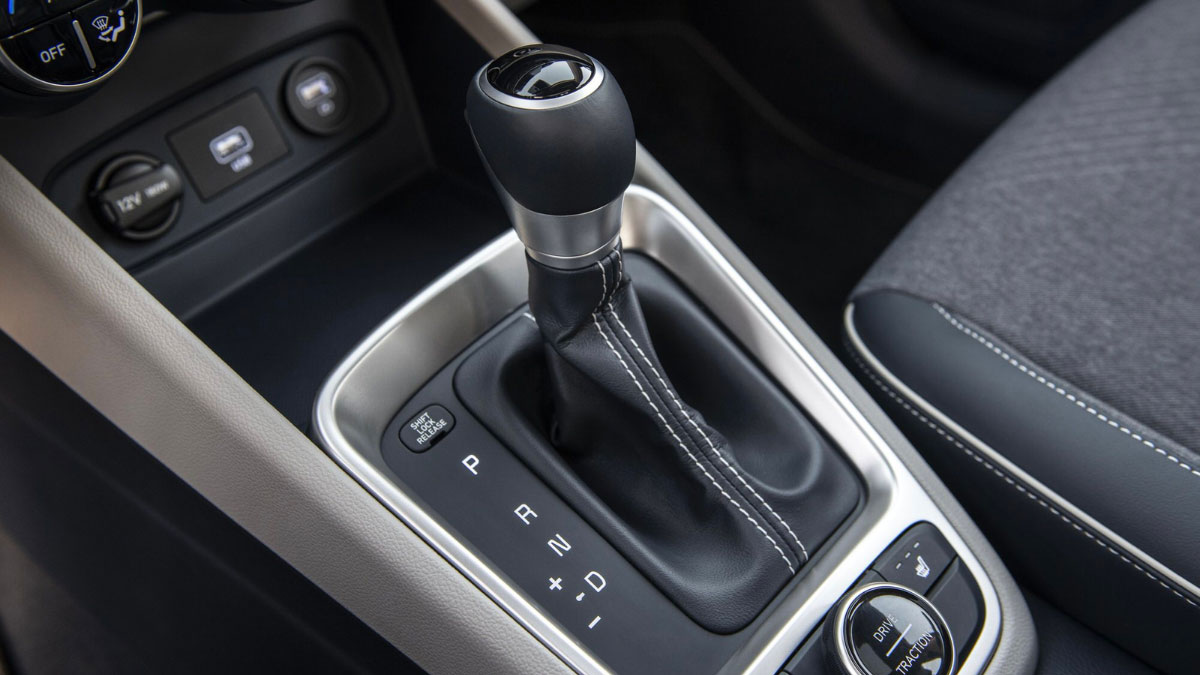Have you ever wondered about the inner workings of a 4-speed automatic transmission? As a car enthusiast, I’ve delved into the ABCs of this essential component that plays a crucial role in your vehicle’s performance. Understanding how a 4-speed automatic transmission functions can provide valuable insights into optimizing your driving experience.
From torque converters to planetary gear sets, each element of a 4-speed automatic transmission contributes to seamless gear shifts and efficient power delivery. Exploring the intricacies of this technology can demystify the mechanics behind your car’s smooth acceleration and fuel economy. Join me as we unravel the secrets of the 4-speed automatic transmission and gain a deeper appreciation for the engineering marvels that propel us forward on the road.
Understanding Automatic Transmissions
Automatic transmissions are complex systems responsible for transferring power from the engine to the wheels efficiently. They ensure seamless gear shifts and optimal performance while driving.
Why Do Vehicles Need a Transmission?
Vehicles require transmissions to vary the amount of power delivered to the wheels based on driving conditions. Transmissions enable the engine to operate within an optimal range of speeds, allowing the vehicle to accelerate, maintain speed, and navigate different terrains effectively.
Transmission’s Primary Goal
The primary goal of a transmission is to regulate the power and torque provided by the engine to the wheels. By adjusting gear ratios, the transmission ensures that the engine operates at an ideal speed for fuel efficiency and performance. This coordinated effort enhances the overall driving experience by balancing power delivery with the vehicle’s speed and load requirements.
Exploring 4-Speed Automatic Transmission
Delving deeper into the world of 4-speed automatic transmission, I’ll uncover more about this vital component in vehicles that significantly influences their performance and efficiency. Understanding the inner workings of a 4-speed automatic transmission is crucial for drivers looking to optimize their driving experience and maintain their vehicle’s longevity. Let’s explore the intricate mechanisms and functions that define this essential system.

Is a 5-Speed Transmission Better Than a 4-Speed?
Exploring the comparison between a 5-speed transmission and a 4-speed transmission, I’ll outline the advantages and considerations for each to help you understand which option might better suit your driving needs.
- Gear Ratio Versatility: A 5-speed transmission generally offers a wider range of gear ratios than a 4-speed transmission. This means that a vehicle with a 5-speed transmission can optimize performance and fuel efficiency across a broader spectrum of driving conditions, from acceleration on highways to navigating steep inclines.
- Smooth Acceleration: With an additional gear, a 5-speed transmission can provide smoother acceleration compared to a 4-speed transmission. This can result in a more seamless driving experience, especially when merging onto highways or overtaking other vehicles.
- Fuel Efficiency: Due to the ability to match the engine’s speed more precisely with the driving conditions, a 5-speed transmission can contribute to improved fuel efficiency compared to a 4-speed transmission. The extra gear allows for better control over the engine’s RPM, potentially saving on fuel consumption.
- Engine Longevity: The wider gear ratio range of a 5-speed transmission can help reduce strain on the engine by keeping it within the optimal RPM range more effectively. This controlled operation may lead to less wear and tear on the engine components over time, potentially extending the engine’s longevity.
- Cost Considerations: It’s essential to note that vehicles with a 5-speed transmission might come at a higher initial cost compared to those with a 4-speed transmission. While the benefits of a 5-speed transmission are clear in terms of performance and efficiency, you’ll need to weigh these advantages against the potential higher upfront investment.
When deciding between a 5-speed and a 4-speed transmission, it’s crucial to consider your driving habits, the terrain you frequently navigate, and your priorities regarding performance and fuel efficiency. By understanding the differences between these transmission types, you can make an informed decision that aligns with your driving preferences and requirements.
Decoding Automatic Transmission Letters and Numbers
When it comes to understanding automatic transmissions, decoding the letters and numbers associated with them can provide valuable insights into their features and capabilities. Let’s delve into the meanings behind these codes to unravel the secrets of automatic transmission systems.
Types of Automatic Transmissions
Automatic transmissions come in various types, each offering unique benefits and functionalities. Common variants include:
- Traditional Automatic Transmission (AT): This type of transmission uses a hydraulic torque converter to shift gears automatically. It’s known for its smooth operation and ease of use.
- Continuous Variable Transmission (CVT): CVTs provide seamless gear shifts without distinct gear steps, offering improved fuel efficiency and a smooth driving experience.
- Dual-Clutch Transmission (DCT): DCTs use separate clutches for odd and even gears, enabling quick and precise gear changes for enhanced performance.
Letters on Automatic Gear Shifters
The letters displayed on automatic gear shifters indicate different driving modes and functions. Here are some common examples:
- P (Park): Engages the parking brake and prevents the vehicle from moving.
- R (Reverse): Shifts the vehicle into reverse gear for backing up.
- N (Neutral): Disengages the engine from the wheels, allowing the vehicle to roll freely.
- D (Drive): Engages forward gears for normal driving conditions.
- S (Sport): Enhances the vehicle’s performance by allowing higher RPMs before shifting gears.
The Working Mechanism of Automatic Transmissions
Automatic transmissions are complex systems that efficiently transfer power from the engine to the wheels without the need for manual gear changes. Here’s a breakdown of how they work:
How Do Automatic Transmissions Work?
In an automatic transmission, there are several key components that work together to facilitate the gear-changing process:
- Torque Converter: This component replaces the manual clutch and transfers power from the engine to the transmission.
- Planetary Gearsets: These gearsets use a combination of gears to provide different gear ratios without the need for manual shifting.
- Hydraulic System: Automatic transmissions use fluid pressure to engage and disengage gears smoothly during gear changes.
- Valve Body: The valve body directs hydraulic fluid to the appropriate clutch packs, allowing for seamless gear shifts.
- Computer Controls: Modern automatic transmissions are controlled by a computer that monitors various factors like vehicle speed, engine load, and throttle position to determine the optimal gear for the driving conditions.
How to Change Gears
Unlike manual transmissions where the driver manually selects gears using a gear stick and clutch, automatic transmissions shift gears automatically based on the vehicle’s speed, engine load, and other factors. Here’s how gear changes occur in an automatic transmission:
- Gear Selection: The transmission’s computer determines the best gear based on driving conditions and signals the hydraulic system to engage the corresponding gear.
- Gear Engagement: Hydraulic pressure is applied to the clutch packs, which engage the selected gear smoothly and seamlessly.
- Shift Timing: Automatic transmissions can shift gears quickly and efficiently, providing uninterrupted power delivery to the wheels for optimized performance.
Understanding the inner workings of automatic transmissions can help drivers appreciate the technology behind seamless gear changes and enhanced driving experiences.
Conclusion
Understanding the ABCs of a 4-speed automatic transmission is essential for grasping its significance in enhancing vehicle performance. While comparing 4-speed and 5-speed transmissions sheds light on the benefits of wider gear ratios and improved fuel efficiency, aligning your choice with driving habits and cost considerations is crucial. Exploring the intricate workings of automatic transmissions, from torque converters to computer controls, reveals the complexity behind seamless gear shifts. Mastering these fundamentals empowers drivers to make informed decisions and appreciate the technology driving their vehicles forward.
Frequently Asked Questions
Are 4-speed automatic transmissions reliable?
Many experts recommend 4-speed automatics for cost-effectiveness. Having more gears may not provide significant benefits except for keeping engine revs optimal.
How do you drive a 4-speed automatic transmission?
Simply shift to drive, press the brake, and accelerate as needed. The transmission will handle gear changes automatically while you focus on driving safely.
What speed is recommended for driving with a 4-speed automatic transmission?
For 4H mode, staying at speeds below 55 MPH is often advised by manufacturers. This mode offers improved traction on varied terrains like snow and mud.
Is it safe to switch to B gear while driving a 4-speed automatic?
You can switch from D to B while driving, but not from B to Park. This shift helps in engine braking and controlling speed on downhill slopes.
Which is better between CVT and 4-speed automatic transmissions?
CVT transmissions are lighter and provide smoother operation, enhancing fuel efficiency due to their ideal torque ratio maintenance.

